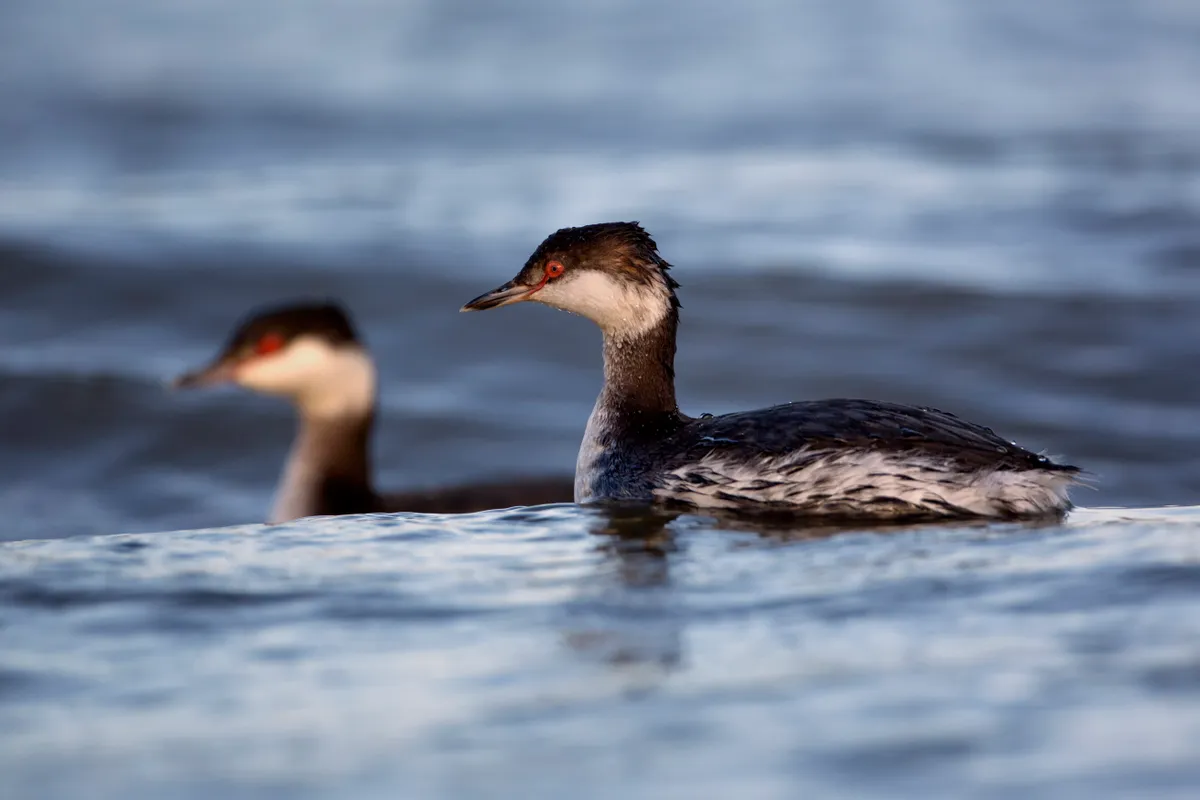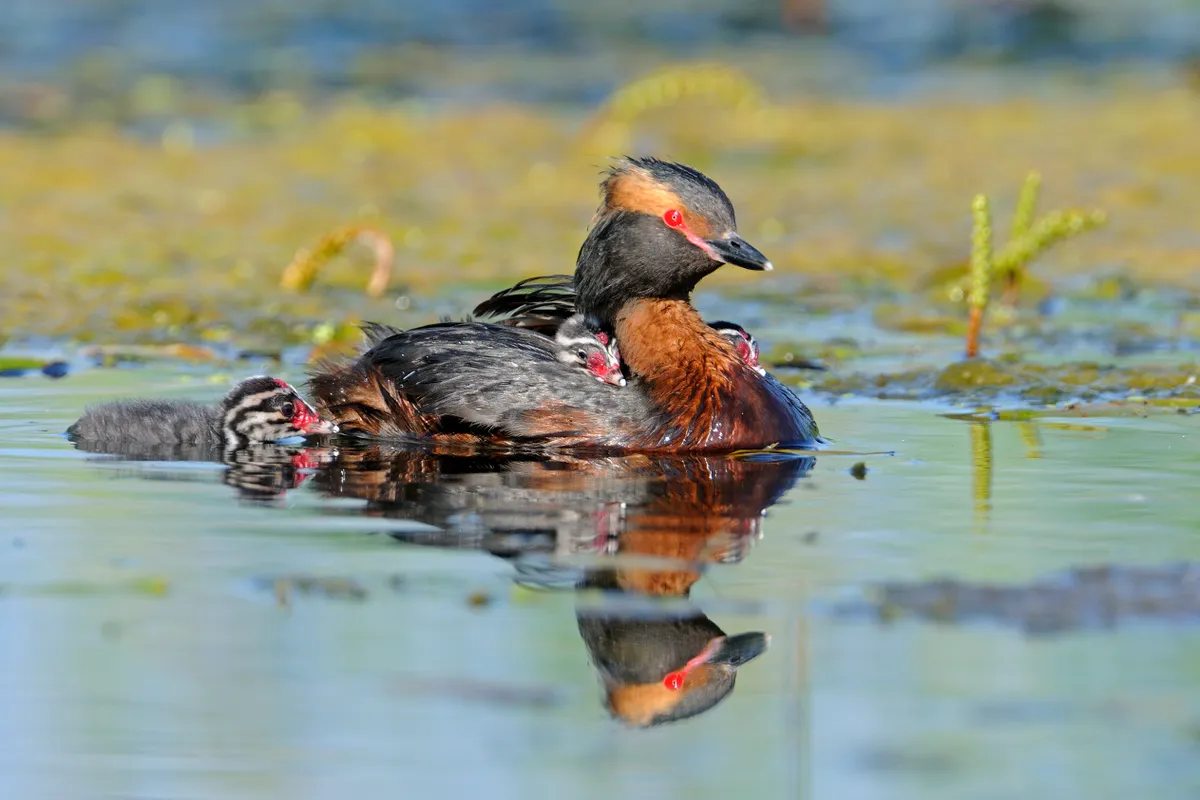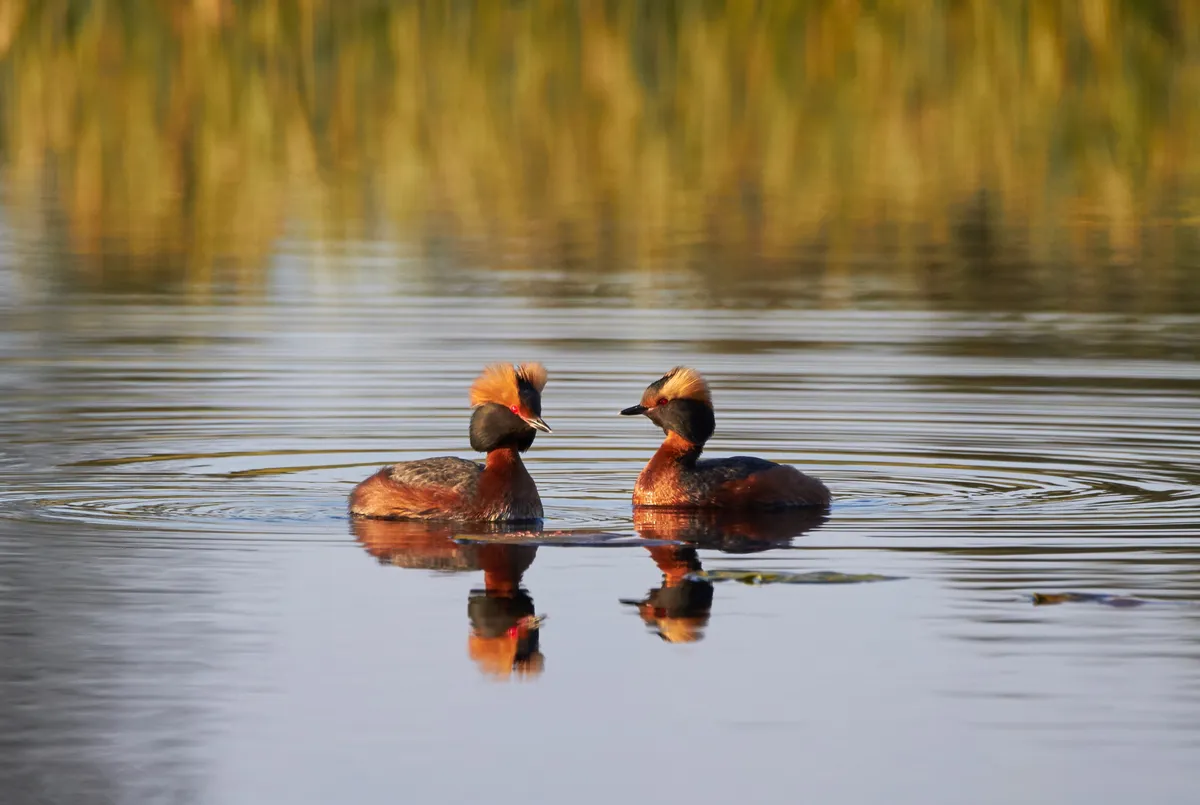You need to visit Scotland to see the Slavonian grebe (Podiceps auritus) in its breeding finery, but it is certainly worth it.
In this guide we take a closer look at the Slavonian grebe, revealing what it looks like, where you can see it, courtship and plumage.
Interested in learning more about Britain’s waterbirds? Read our guides to wading birds, swans, rails and geese.

- British duck guide: identification, species, facts and where to see
- Guide to British seabirds: how to identify and where to see them
- Tern guide: UK species and how to identify them
How to identify the Slavonian grebe

The Slavonian grebe has a glorious chestnut-brown plumage, offset by remarkable yellow-orange tufts sticking above the head.
In winter it is easier to see, but is completely different; it is rather black-and-white, with brilliant white cheeks and a black crown that has been described as looking like a “northerner’s flat cap”. It has a longer, straighter neck than the very similar winter-plumage black-necked grebe, with a white tip to the bill.
Slavonian grebe distribution, habitat and diet

The Slavonian grebe only breeds in a handful of lochs in the Highlands.
In the breeding season it lives on freshwater which has vegetation growing in the water. At this time of the year, its diet comprises mainly insects and their larvae.
In winter the Slavonian grebe usually goes to marine environments, where its diet transforms into a fish-based one. The birds disperse widely and can be seen on almost any coast of Britain, although it is never common or conspicuous.
Its performance underwater can be pretty impressive: it can chase fish at a speed of one metre per second, and during a dive it can stay under for a minute or more.
Slavonian grebe courtship

If you are truly lucky, you might catch a pair of Slavonian grebes taking part in their showy courtship display during the spring. Both sexes dive underwater and collect a piece of waterweed. They then rise up out of the water and rush across the surface, side by side, the weed still dangling from their bills. This amazing display is known as the “weed rush”.
The great crested grebe has a similar display, but in this case the two birds rear up against each other, breast to breast. Slavonian grebes can get so caught up in their displays that they may weed rush up to 15 times in succession.
Slavonian grebe population
The Slavonian grebe is uncommon in the UK (Red List of Conservation Concern), with 30 breeding pairs, and a maximum of 920 individuals in winter.
Credit: Department of Ecology and Genetics

